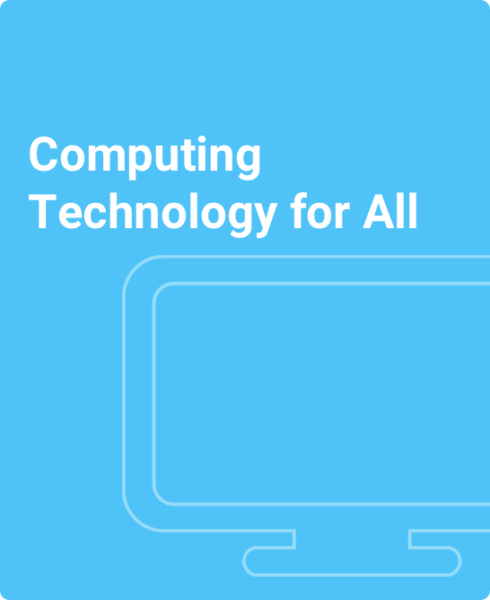Table of Contents
1. History and Basics
1.1 Brief history
1.2 Historical figures in computing
1.3 Why programming
1.4 Computers all around us
1.5 Representing information as bits
1.6 Naming Numerous Bits
1.7 Computing and careers
2. Hardware and Software
2.1 Basic hardware
2.2 Cache, memory, drive
2.3 Types of computers
2.4 Common input devices
2.5 Common output devices
2.6 Moore’s Law
2.7 Hardware trends
2.8 Programming: Machine language
2.9 Programming: Assembly language
2.10 Programming: High-level language
2.11 A brief introduction to Python
3. The Internet and Web
3.1 Internet basics
3.2 IP addresses
3.3 Home networking
3.4 Cellular networks
3.5 Web basics
3.6 Web search engines
3.7 Web search tips
3.8 Domain names and URLs
3.9 Setting up a website
3.10 HTML
3.11 CSS
3.12 JavaScript
4. Operating Systems
4.1 OS basics
4.2 Common operating systems
4.3 OS stories
4.4 Being a good OS user
4.5 Device drivers
5. Computer Applications
5.1 Word processing basics
5.2 Spreadsheet basics
5.3 Presentation app basics
5.4 Database basics
5.5 Audio player apps
5.6 Video player apps
5.7 PDF viewer
5.8 Compression
5.9 Computer graphics
5.10 Creating and editing digital media
6. Web / Mobile Apps
6.1 Video
6.2 Streaming
6.3 Wikipedia
6.4 Social networking
6.5 Email basics
6.6 Email issues
6.7 Text messages
6.8 Blogs
7. Privacy
7.1 Users leave footprints
7.2 Users aren’t anonymous
7.3 Information Is valuable
7.4 Someone could listen
7.5 Sharing releases control
7.6 Search is improving
7.7 Online is real
8. Security
8.1 Security basics
8.2 Viruses and malware
8.3 Account security
8.4 Internet scams and spam
8.5 Cryptography
8.6 Digital certificates
9. Information Systems
9.1 Defining information systems
9.2 Information system development
9.3 Information systems career paths
9.4 Cloud computing applications
9.5 More on cloud computing
10. More Societal Issues
10.1 In-house and outsourcing
10.2 Crowdsourcing
10.3 E-commerce
10.4 Online dating services
10.5 Health and computer use
10.6 Tips for effective email communications
10.7 Intellectual property
10.8 IP licensing and theft
10.9 Cybercrime and punishment
10.10 Cyberbullying
10.11 Digital divide
11. Computing Concepts
11.1 Computational artifacts
11.2 Computational problem solving
11.3 Collaboration
11.4 Abstraction in computing
11.5 Computer models and simulations
11.6 Large data sets
11.7 Data visualization
What you’ll find in this zyBook:
More action with less text.
- Real insights, experiences, and practical skills relating to the exciting world of computing technology
- Numerous animations and interactive question sets
- Built-in tools to enable interactive experiences with Python, HTML, CSS, Javascript, and more
- Adopters have access to a test bank with over 500 questions
The zyBooks approach
Less text doesn’t mean less learning.
Understanding computing technology benefits nearly anybody today, not only demystifying the amazing world of the Internet, the web, computers, smartphones, the cloud, and more, but helping people become better purchasers and users of computing technology too. This zyBook uses animations, interactive questions, and plenty of built-in tools that are enjoyable and yield lasting learning. Users can do real Python programming, visually see how more memory or drives impact a computer, develop and preview working HTML, CSS, or Javascript, and much more—all directly in this web-based zyBook. In contrast to most existing books that emphasize the memorization of endless terminology, this zyBook brings this exciting field to life for the student. The zyBook is also an excellent complement to a course that already has an existing office-applications lab component.
Authors
Frank Vahid
Computer Science PhD, Univ. of California, Irvine / zyBooks Co-Founder
Susan Lysecky
Computer Science PhD, Univ. of California, Riverside



